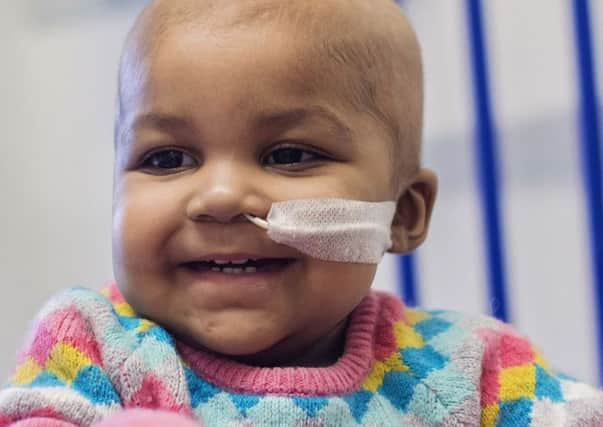Little Layla’s is ‘almost a miracle’


And her defiance paid off.
The tot has become the first person in the world to receive a “designer” immune cell therapy to cure her “incurable” cancer.
Doctors at London’s Great Ormond Street Hospital (GOSH) have described her response to the therapy as “almost a miracle” and “staggering”.
Advertisement
Hide AdAdvertisement
Hide AdThe technique involved gene-editing to manipulate immune cells to fight Acute Lymphoblastic Leukaemia (ALL), the most common form of childhood leukaemia. The therapy has previously only been tested on mice in the laboratory.
Following the treatment, Layla spent months in isolation but is now free of cancer and recovering at home in North London.
Ms Foley, 27, a dental receptionist, said: “We didn’t want to accept palliative care and so we asked the doctors to try anything for our daughter, even if it hadn’t been tried before.”
Layla was diagnosed with cancer at just 14 weeks old after going off her milk and developing a fast heartbeat. At first doctors suspected a tummy bug, but a blood test confirmed ALL. She was rushed to intensive care where doctors described her disease as one of the most aggressive forms they had ever seen.
Advertisement
Hide AdAdvertisement
Hide AdDespite several rounds of chemotherapy and a bone marrow transplant, Layla’s cancer returned. After an experimental treatment in Sheffield also failed, doctors said there was nothing left that could cure her, and suggested palliative care.
That’s when the family were told of a very recent and experimental treatment being developed at the hospital. The treatment involves using “molecular scissors” to edit genes and create designer immune cells programmed to hunt out and kill drug-resistant leukaemia.
Only one vial of the treatment was available for Layla, and an emergency ethics committee meeting was called to seek immediate approval for the treatment.
Layla’s father, Ashleigh Richards, 30, a driver, said: “It was scary to think that the treatment had never been used in a human before but, even with the risks, there was no doubt that we wanted to try the treatment.”
Advertisement
Hide AdAdvertisement
Hide AdLayla was given a tiny infusion of genetically-engineered cells. Within one to two weeks doctors expected to see immune response - usually in the form of a rash or a fever. Layla developed neither but, just as doctors were preparing to send her home, she developed a rash.
A few weeks later, Mr Richards called Ms Foley. “He said that the consultants had been in with results of the treatment and told me to sit down. I thought it was bad news but then he said ‘it’s worked’ and I just cried happy tears.”
Layla will need monthly checks and may be on some medication for the rest of her life, but for doctors, the treatment has been a huge success.
Professor Paul Veys, director of bone marrow transplant at GOSH and Layla’s head doctor, said: “As this was the first time that the treatment had been used, we didn’t know if or when it would work and so we were over the moon when it did. Her leukaemia was so aggressive that such a response is almost a miracle.”